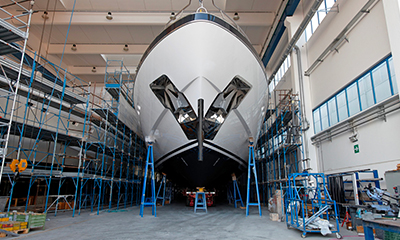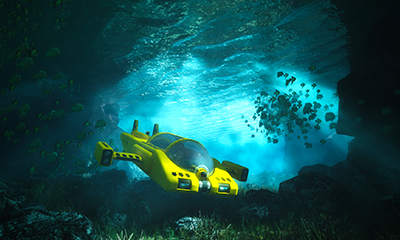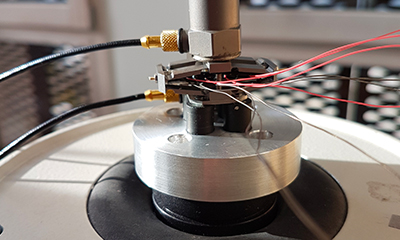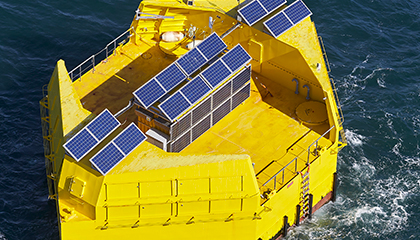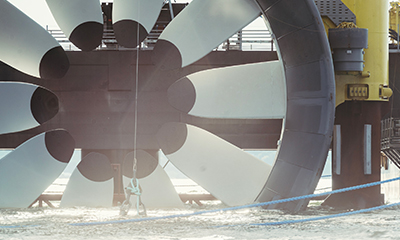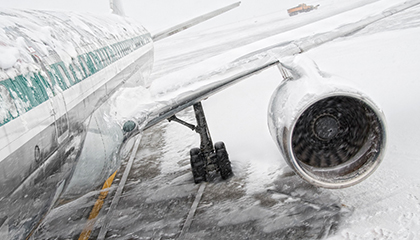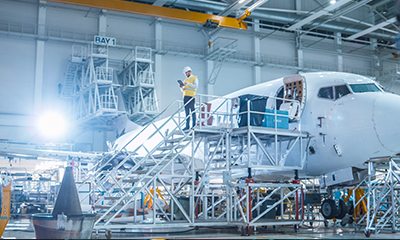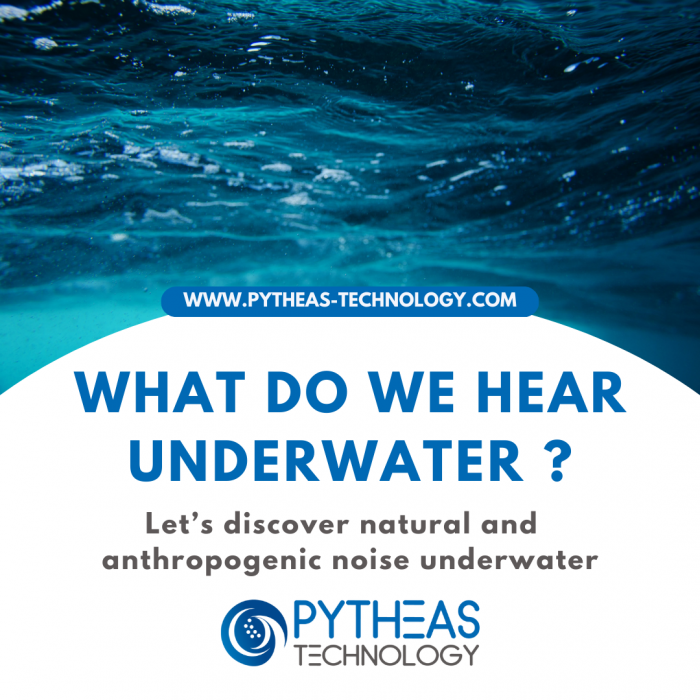Underwater sounds, a sign of underwater life
The Ocean is home to a multitude of species and natural sources of noise. These noises can come from waves, precipitation, seismic movements, as well as animals. As we explained in our article about underwater acoustics, the best way to communicate and locate oneself underwater is to use acoustic waves, because electromagnetic waves are strongly attenuated underwater.
Therefore, marine animals emit sounds to communicate, orient themselves, avoid predators or even hunt and feed themselves. For example:
- Snapping shrimps snap their claws to emit extremely powerful waves of bubbles capable of frightening, injuring or even killing their prey.
- Odontocetes (the family of belugas, whales, orcas, dolphins, etc.)produce and use sounds to locate themselves. Like sonar systems, these species use echolocation to avoid obstacles and locate their prey.
- Dolphins communicate in rich and complex ways with each other thanks to their acoustic capabilities.
Unfortunately, underwater biophony can be disturbed by anthropogenic noise sources.
Disruptive noise of human origin
Underwater man-made noise pollution has been increasing since the beginning of the 20th century. It is caused by different anthropogenic activities, such as:
- Maritime traffic: transport of passengers and goods
- The oil and gas industry: prospection, exploration and production of oil and gas
- Marine renewable energies: field studies, construction and operation of sites
- Military activities: exercises and tests
- Extraction of aggregates: extraction of marine sand for the construction sector in particular
This noise pollution disturbs underwater life by preventing mammals from finding their way, feeding themselves and/or communicating properly. Also, as with humans, ambient noise forces them to “speak louder” by increasing the volume of their clicks and songs. But if the volume gets too loud, the marine mammals end up falling silent.
The noise of anthropogenic origin can disturb underwater life but also threaten it by causing:
- Stress and exhaustion
- Hearing loss or even temporary or permanent deafness
- Disorientations which can cause strandings
The threat of anthropogenic noise is gradually starting to be taken seriously, it is now time to provide solutions.
A growing awareness that seeks solutions
To protect marine species, noise sources should be regulated on a global scale. Little by little, international institutions are trying to recognize the threat of ocean noise and take measures to reduce human-generated noise. Agreements have been concluded such as the Agreement on the Conservation of Small Cetaceans of the Baltic, North East Atlantic, Irish and North Seas (ASCOBANS) or the Agreement on the Conservation of Cetaceans of the Black Sea, Mediterranean Sea and contiguous Atlantic Area (ACCOBAMS) for example. However, as noise pollution is borderless, states and global organizations still have work to do to protect underwater life and this involves 3 steps: recognizing underwater noise pollution as a real threat, quantifying it and evaluating its impacts, and finally putting in place measures to limit it.
Here are some possible solutions:
- Replace the use of compressed air cannons with marine vibroseis during oil and gas exploration. The most devastating anthropogenic source of noise for marine animals is indeed the use of seismic air guns. This technique consists of using several (between 20 and 40) compressed air guns at the same time to detect oil or gas deposits using the echo of the explosions. Air guns emit between 220 and 250 decibels, so a mission in Ireland can be heard as far away as at the East Coast of the United States. Exploration missions can last several weeks or even months and thus disrupt underwater life. An alternative is under development: Marin Vibroseis. Unlike air guns which send short-duration, high-amplitude signals, marine vibroseis produces a long-duration signal at a lower intensity. While the sound of air cannons can travel thousands of kilometres underwater, marine vibroseis can only be heard up to 5km away. Marine vibroseis could make it possible to obtain seismic studies more quickly and more efficiently while having a smaller impact on underwater life.
- Design quieter ships. Several solutions are possible and can be combined: raise machines so that they do not generate vibrations of the boat’s hull, use propellers which avoid cavitation (creation of air bubbles), replace gasoline engines with electric motors which are much quieter… Certain operations can also be carried out by USVs (Uncrewed Surface Vehicles) or underwater gliders which are smaller, quieter vehicles without anyone on board. The DriX, USV developed by Exail, for example, emits less noise in water thanks to its composite hull and smaller motors, without compromising its performance.
- Carry out military tests and training in areas where underwater life is less developed, after having carried out acoustic monitoring demonstrating it.
- Use the ramp-up (or soft-start) technique, which consists in gradually increasing the noise level of the sonar to warn and cause cetaceans to move away from the prospecting area and thus, protect them.
- Create sanctuaries, protected marine areas dedicated to the protection of marine mammals, where human acoustic activities are regulated or even prohibited. We can notably cite the example of the Agoa Sanctuary in the French West Indies, which aims to guarantee a favorable conservation status of marine mammals by protecting them.
PYTHEAS Technology develops underwater acoustics solutions
The Ocean is one of PYTHEAS Technology’s favorite playgrounds. We are developing ways to explore it and access its resources without forgetting the importance of protecting it, through different solutions:
Contact us to learn more about these solutions!


